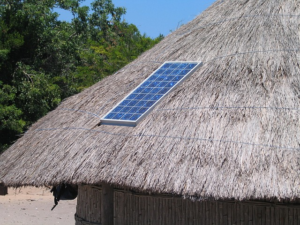
Rooftop solar PV (photovoltaic) panels could supply more than 25 per cent of the world’s electricity needs by 2050, according to a team based in UCC.
Owing to improved deployment capability and reduced costs, rooftop solar PV) – solar farms or roof-mounted solar panels used in home, commercial and industrial buildings – is currently the fastest deployable electricity generation technology.
Using modelling that provides much more accurate indications, the researchers conclude rooftop solar PV can supply 25-49 per cent of global electricity needs by 2050 in their study, the first detailed global assessment of energy potential from this source.
The authors says their findings will have important implications for sustainable development and climate-change mitigations efforts, and for the upcoming COP26 global climate negotiations next month.
Globally, nearly 800 million people were without electricity in 2018; the majority of whom are living in rural areas.
The research team including lead author Siddharth Joshi, together with colleagues Prof Brian Ó Gallachóir and Dr Paul Holloway at MaREI Centre for Energy Climate and Marine, worked with researchers at Imperial College London, Columbia University in New York, and Ahmedabad University in India. The findings are published in the scientific journal Nature Communications.
They mapped 130 million km2 of global land area to identify 0.2 million km2 of rooftop area using a novel machine learning algorithm. This rooftop area was then analysed to quantify the global electricity generation potential of rooftop solar PV.
The authors found a global potential of 27 petawatt-hour (PWh) in electricity per year can be attained at a cost of between $40-$280 (€34 to €242) per megawatt-hour with the greatest electricity generation potential in Asia, North America and Europe.
They indicate the lowest cost for attaining the potential energy is in India ($66 per megawatt-hour) and China ($68 per megawatt-hour), while the United Kingdom and United States are among the most costly countries. They suggest the electricity generation potential of rooftop solar panels exceeds total global yearly energy consumption in 2018.
The technology’s future potential, however, will depend on development and cost of storage solutions for the generated power, notably battery technology that can retain power for use during periods of low availability of renewable energy.
Global rooftop PV can now be predicted with improved accuracy using a combination of big data, machine learning and GIS, explained researcher Siddharth Joshi. “This study can aid in improved representation of rooftop solar PV in global energy systems,” he added.
Prof Brian Ó Gallachóir said: “This potential of 27 PWh per annum from rooftop solar is very significant. For comparison, our total electricity use in all homes around the world was 6 PWh in 2019.”
These results are very timely in the context of COP26, he …….






